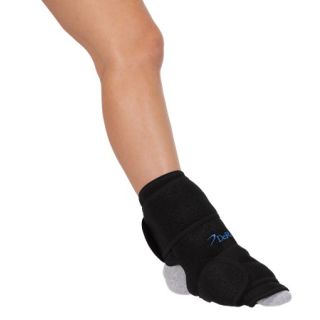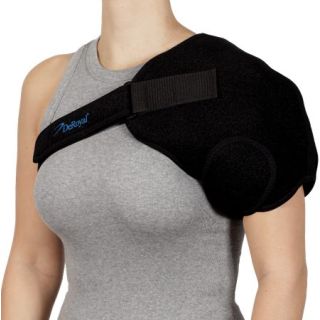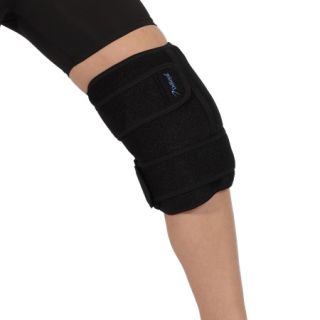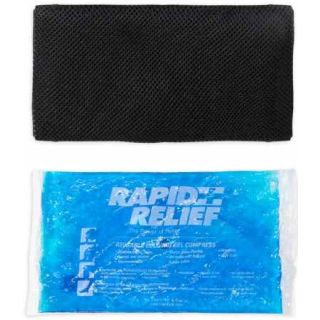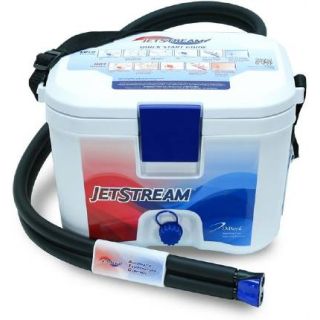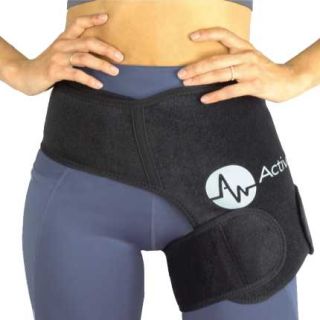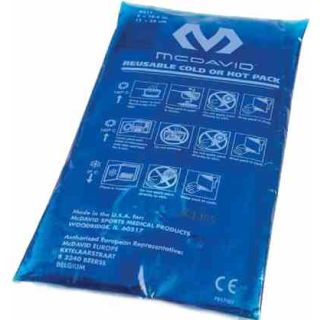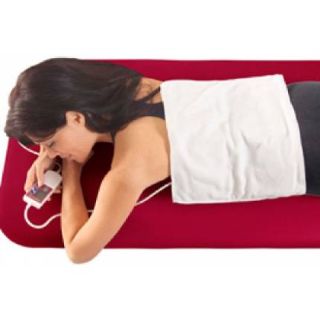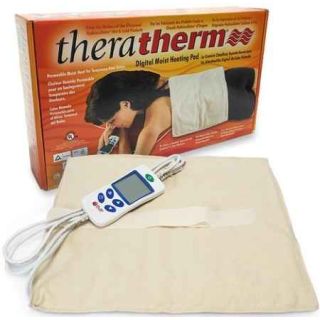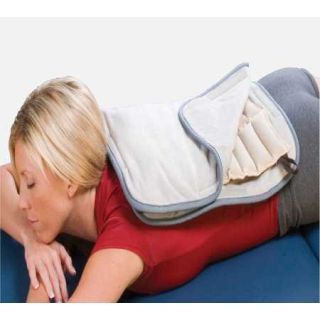Hot Cold Therapy Pack: A Comprehensive Guide to Versatile Pain Relief
Hot cold therapy packs, also known as dual-purpose or reusable therapy packs, are versatile tools designed to provide both heat and cold therapy for pain relief, injury recovery, and overall comfort.
These packs are widely used for managing a variety of conditions, from post-surgical swelling to chronic muscle pain, sports injuries, and even stress relief. Their ability to alternate between hot and cold applications makes them a staple in households, clinics, and athletic training rooms.
Continue reading and learn about the uses, benefits, types, and best practices for hot cold therapy packs. Our guide below is designed to maximize their effectiveness.
What is a Hot Cold Therapy Pack?
A hot cold therapy pack is a reusable, flexible pouch filled with a gel or other heat-retaining and cold-retaining material that can be heated or cooled to deliver targeted therapy. These packs are designed to conform to the body’s contours, providing effective relief to specific areas such as the back, neck, knees, or shoulders. Unlike single-use ice packs or disposable heating pads, hot cold therapy packs are environmentally friendly and cost-effective, as they can be used repeatedly for both hot and cold applications.
The packs are typically made from durable, non-toxic materials, with the inner gel composed of substances like propylene glycol, water, or silica. Many are microwave-safe for heating and freezer-safe for cooling, and they often come with a protective cover to prevent direct skin contact, reducing the risk of burns or frostbite.
Uses of Hot Cold Therapy Packs
Hot cold therapy packs are incredibly versatile, addressing a wide range of physical ailments and needs. Their dual functionality allows them to be used in various scenarios, depending on whether heat or cold is required. Below are the primary uses for each type of therapy:
Cold Therapy Uses
Cold therapy, or cryotherapy, is most effective for acute injuries and conditions involving inflammation. Common uses include:
- Post-Surgical Recovery: Reduces swelling and numbs pain after procedures like knee replacements, shoulder surgeries, or dental work.
- Sports Injuries: Alleviates pain and inflammation from sprains, strains, bruises, or tendonitis.
- Headaches and Migraines: Soothes tension headaches or migraines when applied to the forehead or neck.
- Minor Burns or Insect Bites: Cools the skin to reduce discomfort and swelling.
- Fever Reduction: Helps lower body temperature when placed on the forehead or wrists.
Hot Therapy Uses
Heat therapy, or thermotherapy, is ideal for chronic pain and muscle relaxation. Common uses include:
- Muscle Stiffness or Soreness: Relaxes tight muscles after exercise or prolonged sitting.
- Chronic Pain Conditions: Eases discomfort from arthritis, fibromyalgia, or lower back pain.
- Menstrual Cramps: Reduces uterine muscle spasms and promotes relaxation when applied to the abdomen.
- Joint Stiffness: Improves flexibility and reduces pain in joints affected by osteoarthritis or injury.
- Stress Relief: Warms the body and promotes relaxation when applied to the neck or shoulders.
Benefits of Hot Cold Therapy Packs
Hot cold therapy packs offer numerous advantages, making them a popular choice for home and clinical use. Here are some key benefits:
- Versatility: The ability to use one product for both hot and cold therapy eliminates the need for separate tools, saving space and money.
- Cost-Effectiveness: Reusable packs are a one-time purchase that can be used for years, unlike disposable alternatives.
- Portability: Compact and lightweight, these packs are easy to carry in gym bags, travel kits, or first-aid kits.
- Non-Invasive Pain Relief: They provide a drug-free way to manage pain, reducing reliance on medications.
- Customizable Application: Packs come in various sizes and shapes to target specific body parts, such as wraps for knees, pads for backs, or small packs for wrists.
- Ease of Use: Most packs are simple to prepare, requiring only a microwave, freezer, or hot water for activation.
Types of Hot Cold Packs
Hot cold therapy packs come in various forms to suit different needs and preferences. Here are the most common types:
- Gel-Based Packs: The most popular type, filled with a flexible gel that retains heat or cold for 15–30 minutes. They are durable and conform well to the body.
- Clay or Bead-Filled Packs: These use natural materials like clay or silica beads, which can hold heat longer than gel but may be less flexible when cold.
- Microwavable Grain Packs: Filled with grains like rice or wheat, these are often handmade and used primarily for heat therapy, though some can be cooled.
- Electric-Powered Packs: These are less common but offer precise temperature control for either hot or cold therapy, often with adjustable settings.
- Wraps and Straps: Some packs come with Velcro straps or elastic wraps to secure them to specific areas, such as the knee or shoulder, for hands-free use.
How to Use Hot Cold Therapy Packs Safely
To maximize the benefits of hot cold therapy packs and avoid injury, follow these guidelines for safe use:
For Cold Therapy
- Preparation: Place the reusable ice pack in a freezer for 1–2 hours or as directed. Some packs can be stored in the freezer for immediate use.
- Protect the Skin: Always use a cloth, towel, or the pack’s provided cover as a barrier to prevent frostbite or skin irritation.
- Application Time: Apply for 15–20 minutes at a time, with at least a 30-minute break between sessions to avoid tissue damage.
- Monitor Skin: Check the treated area for excessive redness, numbness, or discomfort, and discontinue use if these occur.
For Hot Therapy
- Preparation: Heat the pack in a microwave according to the manufacturer’s instructions, typically 30 seconds to 2 minutes. Alternatively, some packs can be submerged in hot water.
- Test Temperature: Ensure the pack is warm, not scalding, by testing it on your inner wrist before applying it to the target area.
- Protect the Skin: Use a cover or towel to prevent burns, especially if the pack feels very hot.
- Application Time: Apply for 15–20 minutes, checking the skin periodically for signs of overheating or irritation.
General Tips
- Consult a Doctor: If you’re unsure whether hot or cold therapy is appropriate for your condition, seek medical advice. For example, heat should not be used on acute injuries, and cold may not be suitable for certain circulatory conditions.
- Clean Regularly: Wipe the pack with a damp cloth or mild disinfectant to keep it hygienic, especially if used on open wounds (with a barrier).
- Store Properly: Keep the pack in a dry, cool place when not in use to maintain its integrity.
Choosing the Right Hot Cold Therapy Pack
When selecting a hot cold therapy pack, consider the following factors:
- Size and Shape: Choose a pack that fits the area you need to treat. For example, large rectangular packs are ideal for the back, while smaller packs work well for wrists or ankles.
- Material Quality: Look for durable, leak-proof materials that can withstand repeated heating and cooling.
- Flexibility: Ensure the pack remains pliable when cold to conform to your body.
- Ease of Maintenance: Opt for packs that are easy to clean and come with clear heating/cooling instructions.
- Additional Features: Some packs include covers, straps, or aromatherapy elements (e.g., lavender) for added comfort.
- Brand Reputation: Trusted brands offer reliable, high-quality options.
Popular Brands and Products
Several brands specialize in hot cold therapy packs, offering products tailored to different needs:
- ActiveWrap: Known for portable, reusable gel packs and wraps for targeted relief.
- Theratherm: Offers electric-powered packs with adjustable settings.
- Chattanooga ColPac: Popular in clinical settings, these gel packs are durable and effective for cold therapy.
- DeRoyal: Specializes in anatomically designed packs for specific body parts, like knees or elbows.
Conclusion
Hot cold therapy packs are a versatile, cost-effective, and non-invasive solution for managing pain, reducing inflammation, and promoting relaxation. Their dual functionality makes them an essential tool for anyone recovering from surgery, managing chronic pain, or dealing with everyday aches and injuries.
By understanding how to use them safely, choosing the right product, and following best practices, you can harness the full benefits of hot and cold therapy. Whether you’re soothing a sprained ankle, easing menstrual cramps, or relaxing sore muscles, a hot cold therapy pack is a reliable companion for health and wellness.
 Details$71.99 $54.99
Details$71.99 $54.99 Details$70.99 $59.99
Details$70.99 $59.99 Details$68.99 $57.99
Details$68.99 $57.99 Details$41.99 $36.99
Details$41.99 $36.99 Details$189.99 $165.99
Details$189.99 $165.99 Details$79.95 $51.99
Details$79.95 $51.99
 Details$13.99
Details$13.99 Details$18.99 $11.17
Details$18.99 $11.17 Details$29.00 $18.50
Details$29.00 $18.50 Details$82.99 $69.99
Details$82.99 $69.99 Details$14.82 $14.82
Details$14.82 $14.82
